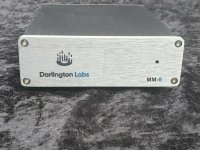
Behind the phono cartridge, a system’s phono preamplifier has the second most difficult job in an analog lover’s system, and is often overlooked. The phono preamplifier’s job is twofold. First, it amplifies the tiny voltage put out by the phono cartridge to a voltage high enough for the amplifier to work with. Secondly, it performs RIAA equalization. Without equalization during the mastering process, the long playing LP couldn’t exist. Bass is cut and treble is boosted when the lacquer is cut, and this is passed on to the final LP. The phono preamplifier reverses the bass cut and treble boost, and needs to do it accurately, while (hopefully) adding as little error during the process and as little noise as possible. One may have this function built into their amplifier, or there are a wide variety of outboard units available from as little as under $50 to as high as $65,000— I’m not kidding. Features, build quality and design philosophy differ, but basically they all do the same thing. How well they get the job done- now that’s a different story.
There are three basic ways to build a phono preamplifier. The most common is based around a variety of off the shelf integrated circuits. Then there are tubed units. A word of caution here: I wouldn’t consider a tubed unit under $1000 and even then, the one I’d ultimately buy is $2800. The one I lust after is nine grand, give or take. There are some very inexpensive tube phono preamps on eBay. Those should be especially avoided. Not only are they quite poor in performance, some are actually unsafe. The third way to build a phono stage would be using discrete components- solid state without the use of integrated circuits. Obviously, this is more difficult (and expensive) to design and build, and is usually reserved to units starting around $1000. Some feel discrete units offer the highest performance.
The Darlington Labs MM-6
Darlington Labs are the new guys on the block. That doesn’t mean inexperienced: they have well over a half a century in analog experience shared between the members of the team. Based in Massachusetts, they offer three models of phono preamplifiers priced from $129 MM-3 to the top of the line MM-6 under review priced at $329. What sets them apart from their competition is that all of their products are discrete and built in the United States. To the best of my knowledge, they are the lowest priced such designs on the market. Parts come from variety of vendors, with a few non-critical parts coming from China to keep the costs in check.
